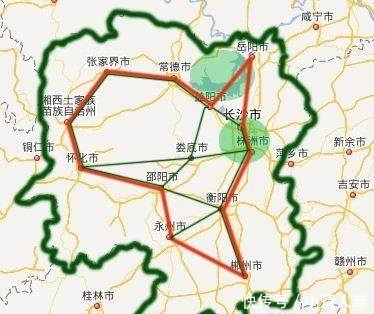йўҳзӣ®еҰӮдёӢпјҡ
public static void main(String[] args) {Integer i1 = 100;Integer i2 = 100;Integer i3 = 150;Integer i4 = 150;System.out.println(i1 == i2);System.out.println(i3 == i4);}гҖҗдёҖйҒ“з®ҖеҚ•йқўиҜ•йўҳеј•еҮәзҡ„Javaж•°жҚ®зұ»еһӢиҝһзҺҜй—®гҖ‘дҪ жғіеҘҪзӯ”жЎҲдәҶеҗ—пјҹ
зӯ”жЎҲжҳҜпјҡ
truefalseдёәд»Җд№ҲдёҚйғҪжҳҜtrueе‘ўпјҹ
иҝҷе°ұйңҖиҰҒжҲ‘们зңӢзңӢInteger i1 = 100;жү§иЎҢиҝҷжқЎиҜӯеҸҘзҡ„ж—¶еҖҷеҸ‘з”ҹдәҶд»Җд№Ҳпјҹ
еҪ“жҲ‘们з»ҷдёҖдёӘIntegerеҜ№иұЎиөӢдёҖдёӘintеҖјзҡ„ж—¶еҖҷпјҢдјҡи°ғз”ЁIntegerзұ»зҡ„йқҷжҖҒж–№жі•valueOfпјҢжҹҘзңӢjdkжәҗз ҒпјҢvalueOfж–№жі•еҶ…е®№еҰӮдёӢпјҡ
/** * Returns an {@code Integer} instance representing the specified * {@code int} value.If a new {@code Integer} instance is not * required, this method should generally be used in preference to * the constructor {@link #Integer(int)}, as this method is likely * to yield significantly better space and time performance by * caching frequently requested values. * * This method will always cache values in the range -128 to 127, * inclusive, and may cache other values outside of this range. * * @parami an {@code int} value. * @return an {@code Integer} instance representing {@code i}. * @since1.5 */public static Integer valueOf(int i) {assert IntegerCache.high >= 127;if (i >= IntegerCache.low && i <= IntegerCache.high)return IntegerCache.cache[i + (-IntegerCache.low)];return new Integer(i);}д»Һд»Јз Ғе’ҢжіЁйҮҠдёҠеҸҜд»ҘзңӢеҲ°пјҢиҝҷдёӘж–№жі•жҳҜд»Һjdk1.5д№ӢеҗҺејҖе§Ӣж·»еҠ зҡ„ гҖӮ
еҰӮжһңж•ҙеһӢеӯ—йқўйҮҸзҡ„еҖјеңЁ-128еҲ°127д№Ӣй—ҙпјҢзӣҙжҺҘеј•з”ЁеёёйҮҸжұ дёӯзҡ„IntegerеҜ№иұЎпјҢеҗҰеҲҷnewж–°зҡ„IntegerеҜ№иұЎ гҖӮжүҖд»ҘдёҠйқўзҡ„йқўиҜ•йўҳдёӯi1 == i2зҡ„з»“жһңжҳҜtrueпјҢиҖҢi3 == i4зҡ„з»“жһңжҳҜfalse гҖӮ
жҺЁиҚҗйҳ…иҜ»
- з®Җиҝ°ж–№дҪҚи§’еҜ№е…үдјҸз”өз«ҷеҸ‘з”өйҮҸзҡ„еҪұе“Қ
- зңҹеҝғжңӢеҸӢз®Җзҹӯжҡ–еҝғиҜқ жңӢеҸӢд№Ӣй—ҙзҡ„еҸӢи°ҠиҜҙиҜҙеҸ‘иҮӘжӢҚзҡ„иҜҙиҜҙ
- е”җеӨӘе®—жқҺдё–ж°‘еҮәз”ҹ е”җеӨӘе®—з®Җд»Ӣ
- еҲ¶дҪңmacOSзі»з»ҹзӣҳи¶…зә§з®ҖеҚ•пјҢд»ҘеҸҠT2иҠҜзүҮзҡ„е®үиЈ…ж–№жі•
- еҺҹжқҘPSи’ҷзүҲиҝҷд№Ҳз®ҖеҚ•е‘Җ
- д»ҒеҢ–ж®·жө©иҢ¶з®Җд»Ӣ
- жӯҷеҺҝжңұе…°иҠұиҢ¶з®Җд»Ӣ
- зәўиҢ¶зҡ„з”ұжқҘеҺҶеҸІз®Җд»Ӣ
- жё…жңқеҗҚе°Ҷе№ҙзҫ№е°§з®Җд»Ӣ е№ҙзҫ№е°§з®Җд»Ӣ
- зәўиҢ¶зҡ„еҺҶеҸІиө·жәҗз®ҖеҚ•д»Ӣз»Қ








![[жҷЁиҙўз»Ҹ]еӣ дёӘдәәеҺҹеӣ пјҢжі°иұӘ科жҠҖиҜҒеҲёдәӢеҠЎд»ЈиЎЁеҲҳз«Ӣз«ӢиҫһиҒҢ](https://imgcdn.toutiaoyule.com/20200404/20200404062421835721a_t.jpeg)






